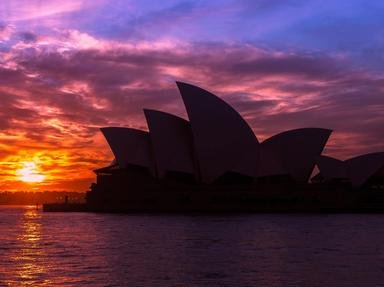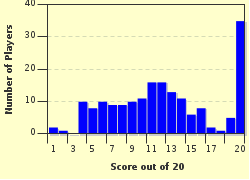Quiz Answer Key and Fun Facts
1. On the very first day of the new century, January 1st 1901, the Commonwealth of Australia was proclaimed in Sydney's Centennial Park, by the first Governor General. Who was he?
2. In the early part of the century Australians were captivated by the brilliant operatic voice of the soprano Dame Nellie Melba. What was Dame Nellie's given name?
3. Australia was involved in the Great War of 1914-18. One issue divided the Australian people like no other, causing Prime Minister Hughes to be expelled from the Australian Labor Party. What was the issue?
4. During the twentieth century more than 20 men served as Prime Minister, starting with Edmund Barton and finishing with John Howard. How many men served as PM?
5. By the late 1920s flying had become all the rage and records were being set. Flying an average 700 miles a day, who in June 1927 circumnavigated Australia in record time?
6. The 1930s saw the Great Depression, and like other countries Australia was hard hit. In 1975 a PM was dismissed by a Governor (Sir John Kerr) but in 1932 a Premier of New South Wales was also dismissed by a Governor (Sir Phillip Game), who was he?
7. A huge controversy hit Australia in 1932-33. Bodyline bowling was used in the cricket matches between Australia and England. Who was the English Captain for the test series?
8. 1939 saw the out break of World War II. In 1941, the HMAS Sydney was sunk off the coast of Western Australia with the loss of all hands. What class of war ship best describes the HMAS Sydney of WWII?
9. The modern Summer Olympics began in Athens in 1896. The first Olympics of the twentieth century were held in St Louis in 1904 and the last in Sydney in 2000. How many Summer Olympics were staged during the twentieth century?
10. The 1950s saw Great Britain join the USA and Soviet Union as a holder of atomic weapons. Australia was a part of the British A-bomb testing programme. Where in South Australia were many of these tests conducted?
11. Australia has seen many outstanding thoroughbreds of the turf in the twentieth century, probably non better than the winner of the 1957 AJC Derby. Who was he?
12. In the 1960s Australia became involved in the Vietnam War. The Australian Task Force established its base at Nui Dat. In which Vietnamese Provence was Nui Dat?
13. Starting with Queen Anne in 1707 there have been 12 monarch of the United Kingdom. How many were Australia's Head of State during the twentieth century?
14. On November 11th 1975 the Governor General Sir John Kerr took the unprecedented action of dismissing the Whitlam Labor Government from office. What major factor brought on Whitlam's dismissal?
15. Cricket is Australia's national summer sport, and England is seen as the 'Old Enemy'. During the twentieth century Australia played England in 46 series, with 234 matches being played, 74 were drawn or tied, the overall wins favour Australia, by what ratio?
16. During the 1980' the number one Australian movie was "Crocodile Dundee", staring Paul Hogan and Linda Kozlowski. Whose real life exploits inspired the movie?
17. From the mid 1950s to the early 1970s Australians dominated the Wimbledon Men's Singles Championship, but it wasn't until 1987 that another Australian male took the title. Who was he?
18. Which Australian took out the 1993 Walkley Award, for best feature writer for 'Did Daniel Have to Die'?
19. To reflect the traditional ownership of the surrounding land the name of 'Ayers Rock - Mount Olga National Park' changed to 'Uluru - Kata Tjuta National Park'. When?
20. At the Opening Ceremony of the 2000 Sydney Olympics, who was Australia's flag bearer?
Source: Author
Paul1405
This quiz was reviewed by FunTrivia editor
bloomsby before going online.
Any errors found in FunTrivia content are routinely corrected through our feedback system.

